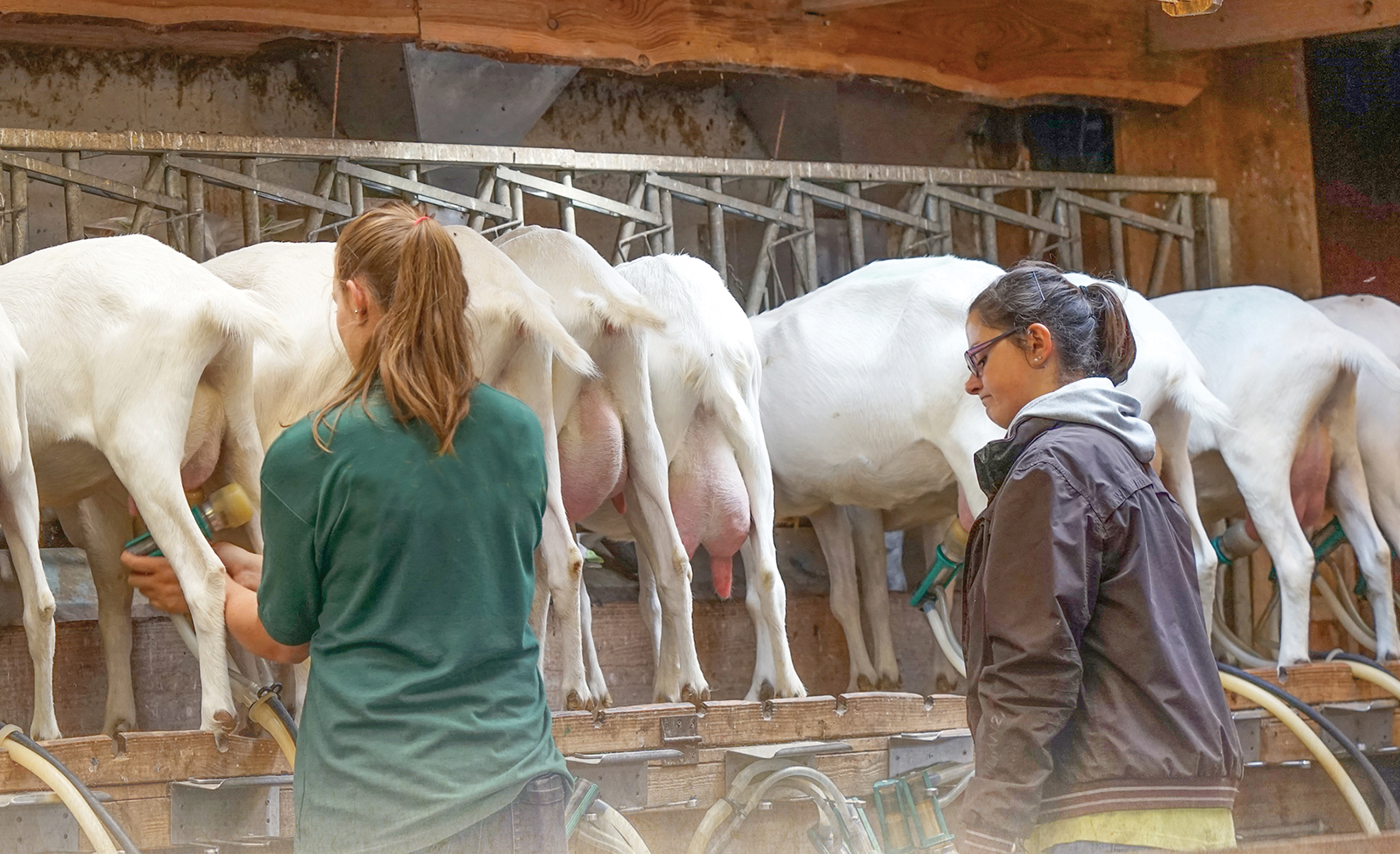Dairy Goat Milking Systems

Dairy Goat Milking Systems
By Larry Tranel, Dairy Field Specialist – Iowa State University Extension and Outreach
What is the best way to milk a dairy goat? It truly depends on many factors, but especially on herd size, labor availability and finances. Milking systems can range from hand milking to bucket milking to stationary milking parlors to rotary parlors.
Due to milker ergonomics, most goats are milked on raised platforms to eliminate bending or kneeling for milker comfort. Goats are active, jumpy and somewhat combative with each other when standing side-by-side in milking systems, so some type of head restraint or division is highly recommended. A ramp can be used to get the goats onto a parlor platform, but goats are often fine just jumping onto a platform from the pit area for systems using individual headlocks with no backrails.
Pit depth is often a concern in many parlors, including goat parlors. Often the decision is made to lower the platform since goats can only jump so high but usually at the expense of milker comfort. A person 6’0 tall milks comfortably at a 42” pit depth, so adjust height from there for the tallest milker, not the shortest. It is easier for a shorter person to milk six inches up than for a taller person to bend over even one inch due to back strain. Thus, consider this in addition to how high a particular breed or size of goat can jump up onto a milking platform. With all considered, a ramp onto the end of the platform would usually be advised.
Milking parlors for smaller and medium sized herds are often self-constructed or constructed by non-milking equipment dealers. They can be made in a single sided or double-sided fashion with a variety of steel types and designs used. A double-sided 15 for example, might be self-constructed for less than $5,000 of steel and materials with a headlock type design for the stall work. This usually is not including the milking system or labor to construct.
For larger herds, a rapid exit parlor or rotary carousel system might be more preferred. These systems would seem the most preferred and ideal but as cost figures in it becomes more of a financial challenge. A rapid exit parlor might run in the $1,000 to $2,000 per stall with options of automatic feeding systems included. A new rotary parlor might cost in the $10,000 per stall range, with the milking equipment and installation possibly included. The high cost often leaves producers looking for lower cost alternatives.
Since the lower cost alternatives seem to have the most interest in average herd size operations, this will be our remainder focus. Breed of goat is important to determine size of parlor platform relative to a parabone (70 degree angle) and a parallel (90 degree angle). The parabone parlor typically has 32-38 inches of platform width with the brisket rail 24-28 inches from the butt rail. Each doe needs an estimated 10 inches of width per stall. The parallel parlor typically has 46-52 inches of platform width with the brisket rail 28-36 inches from the butt rail. Each doe needs an estimated 12 inches of width per stall. For rapid exit parallel systems, another 24 inches in front of the parlor should allow does to exit forward with enough space to turn and leave. Know that breed and size of doe can shift needed dimensions so measure an average doe before constructing.
The bottom backrail (often just one backrail) should be positioned just above the hock on the average or taller goats. The brisket rail should be positioned at the juncture of the brisket and the neck and should not be too high that it cuts into the neck and inhibits eating of grain. If using headlocks, then the same holds true for the position of the bottom of the headlock.
Dairy goats can be milked in swing-over systems or doubled-up systems where each stall on both sides have a milking unit. In addition, one unit can milk more than one doe per side so a swing 12 parlor might only have 6 milking units whereby each unit milks two does on one side before swinging to the other side. Other cost saving techniques are used milking systems and bulk tanks from dairy cow herds. Milking systems and even milking units can be adapted from dairy cow herds. It would be encouraged to use swing arms that would keep the milk hoses nearer to the goat being milked and also out of the middle for more ease of walking up or down through the middle of the milking parlor.




